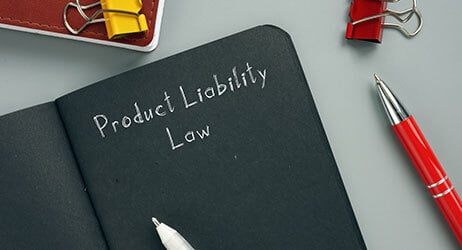Consider investing in a product that promises convenience and safety. However, it harms you instead because of a concealed design defect. This is the sad truth of faulty products, and it can be very intimidating to navigate the legal system.
Handling a product liability suit can be difficult, particularly if there is a design flaw. As opposed to manufacturing faults, which appear during the production process, design flaws are intrinsic to the product and are therefore more challenging to find and validate. Nonetheless, you can manage the difficulties and obtain just recompense by being aware of the legal environment and taking the appropriate actions.
Product Liability: What Is It?
Product liability is the legal term used to describe how a manufacturer, distributor, or seller can be held accountable for harm or losses brought on by a defective product. Three primary categories of flaws may give rise to this liability:
- Design defects: Regardless of the method of manufacture, there are intrinsic flaws in the product’s design that render it dangerous.
- Manufacturing defects: These arise while manufacturing and lead to a product that is harmful because it deviates from its intended design.
- Marketing flaws: These result from insufficient cautions or directions that do not warn consumers of the possible hazards connected to the product.
Examining Defective Design in More Detail
Design flaws are frequently the hardest to establish in cases involving product responsibility. You need to provide evidence of the following components to make a strong claim:
- The product was flawed when it was received. To pinpoint the precise design fault and its potential for harm, this must be evaluated by experts.
- The product was defective when it was taken out of the hands of the maker. This indicates that the product’s defect was not brought on by misuse or modification in the future.
- The defect was the direct cause of your harm. This creates a clear connection between the defect and the damage you experienced.
- There was a visible and compensable injury you sustained. This covers any financial, psychological, and physical harm brought on by the product’s flaw.
Getting Ahead in the Legal Maze
It is imperative that you take the following actions if you think a defective product has hurt you:
- Seek Medical Attention: Give your health and wellbeing priority. Make sure you receive the necessary medical attention and keep a detailed record of your wounds.
- Preserve the Product: As proof of the flaw, maintain the product in its original state. Don’t discard it or make any changes to it.
- Gather Evidence: Gather receipts, user manuals, and warranties, along with any other paperwork pertaining to the purchase and usage of the goods.
- Speak with a Product Liability Attorney: A skilled lawyer can help you navigate the legal nuances of your situation, evaluate the strength of your case, and provide you with strong representation.
- File a Lawsuit: Your lawyer will assist you in bringing a legal action against the product’s maker, supplier, or vendor.
- Get Ready for Trial: You could have to give testimony as an expert witness, attend depositions, and submit evidence in court.
- Bargain for a Settlement: Out-of-court settlements are common in product liability lawsuits. To get a just and fair result, your attorney will negotiate on your behalf.
Handling a product liability claim can be difficult and time-consuming. But you can improve your chances of getting just compensation for your injuries and making the manufacturer answerable for their wrongdoing by being aware of your rights, acting proactively, and consulting a lawyer.
Contact Now for a free consultation (718) 414-6642.


 How to Deal with Product Liability Claims?
How to Deal with Product Liability Claims? 

